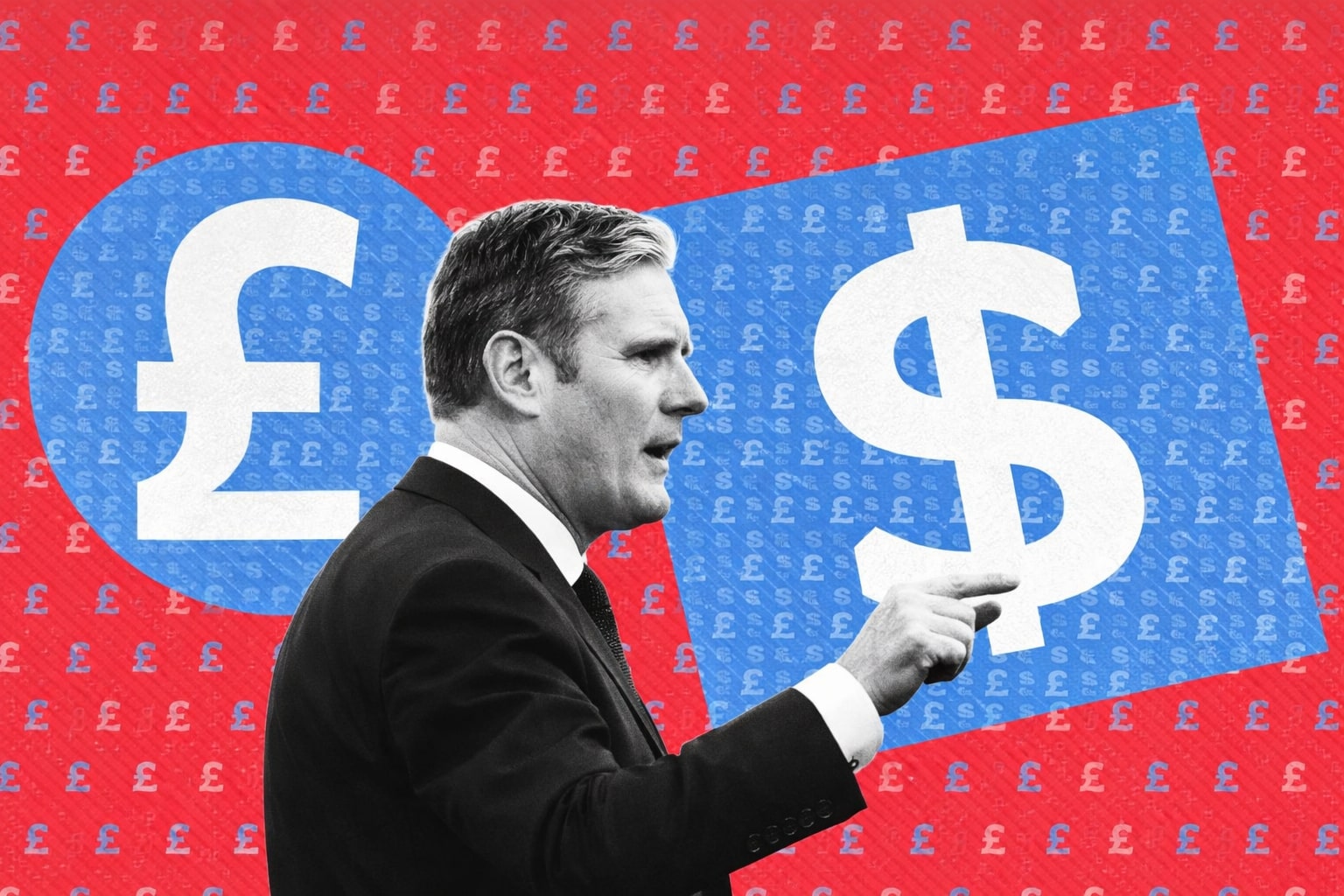
EUR/USD Dynamics - ECB Announcements and Economic Shifts
Explore the factors influencing the EUR/USD currency pair movements, from ECB monetary policies to economic indicators and market sentiments. Gain insights into the broader Forex market dynamics and the challenges faced by major currencies against the USD | That's TradingNEWS
EUR/USD's Short-Lived Momentum and Broader Context
The EUR/USD currency pair, recently experiencing an upward trajectory, retraced from its mid-August highs. Remarkably, these highs came at a time when the pair was under a bearish spell. As of July 18th, the EUR/USD was hovering around the 1.12780 mark. The present downturn in the EUR/USD is consistent with the broader Forex market's trend, underscoring the fact that its performance is not an isolated incident. Major currencies, much like the EUR/USD, are facing challenges against the USD.
The Underlying Factors and Market's Response
There is palpable tension in the market due to the concerning economic indicators emerging from Europe, especially Germany. This has intensified the recessionary pressures on the EU. Even though there has been aggressive selling of EUR/USD, the currency pair hasn’t faced a unilateral decline. The past week presented a mixed picture with a surge in buying initially, which eventually succumbed to selling pressures. With the U.S. observing a holiday, traders should anticipate muted volumes and potential volatility spikes.
Week Ahead for EUR/USD Traders
This currency pair continues to be in the limelight, both for financial institutions and day traders. While many traders feel that the EUR/USD is oversold, the bearish sentiment has prevailed, especially with heightened selling before the weekend. The forecasted speculative range for the EUR/USD is between 1.06710 and 1.09360. Given the vast price oscillations in recent weeks and the media's coverage of the same, traders must be vigilant, particularly concerning potential news from the U.S. related to corporate bank downgrades.
Tricky Market Timing
Establishing a turning point in the Forex market is perilous. Going against a prevailing trend has historically led traders astray. The downward motion in the EUR/USD remains solid. Crucial support levels between 1.07500 to 1.07300 are worth monitoring this week. Should these not hold, it might signal further declines for EUR/USD.
External Influences
In the absence of significant economic data in the upcoming week, the EUR/USD will be swayed by the prevailing sentiment. There's a prevalent belief among some traders that the currency pair is oversold. However, predicting the exact moment of trend reversal remains elusive, especially given the summer's challenging market conditions. Following a steep decline on Thursday, the EUR/USD found some stability near 1.0850 on Friday. A breakthrough above 1.0900 could pave the way for further upside.
Monetary Policy and Economic Indicators
A cautious approach from investors emerged following reservations about another rate hike by the European Central Bank (ECB) in September. Concurrently, U.S. data revealed the Personal Consumption Expenditures (PCE) Price Index aligning with market predictions, and a decline in weekly Initial Jobless Claims. The U.S. Dollar's resurgence could be attributed to the profit-booking activities on August's last trading day. Notably, nonfarm payrolls (NFP) in the U.S. are projected to increase by 170,000 in August. If the NFP falls short for the third consecutive month, the USD might face renewed selling pressures, potentially benefiting EUR/USD.
Technical Analysis of EUR/USD
From a technical perspective, the Relative Strength Index (RSI) on the 4-hour chart has flattened near the 50-mark, indicating a temporary hold from sellers. Noteworthy resistance lies at the 1.0890-1.0900 level, marking the convergence of the 100-period SMA and the Fibonacci 23.6% retracement. Conversely, support is found at 1.0840, trailed by the psychological barrier at 1.0800 and 1.0770.
Inflation and the ECB's Stance
In the Euro Area, the core inflation rate dropped to 5.3% from 5.5%, offering some relief to the ECB, which has been grappling with this stubbornly high rate. The year-on-year inflation remained stable at 5.3% in August. The ECB faces increasing challenges as economic data paints a mixed picture across the Euro Area. The recent data has put a September rate hike by the ECB into question, with market probabilities dropping to 30% post-data release.
Recent Performance Overview
In the week ending September 1, the EUR/USD dipped by 0.20% to close at $1.07731, marking its seventh consecutive week of decline. The currency pair experienced a high of $1.09454 on Wednesday but fell sharply to $1.07720 by Friday.
Economic Health Check: Focus on Germany
Germany's economy remains under scrutiny amid rising concerns over an impending recession. Key economic data points to watch include German factory orders (Wednesday) and industrial production (Thursday). Revisions to preliminary inflation figures and other stats, such as service sector PMIs and Eurozone GDP numbers, will also influence the EUR/USD trajectory.
European Central Bank’s Recent Announcements
In recent days, the European Central Bank (ECB) has been at the forefront of financial discussions, releasing a series of critical statements that have garnered considerable attention from the financial community.
Monetary Policy Decisions
The ECB’s latest monetary policy decisions were closely watched by market participants, given the significant impact they have on the European economy. The central bank opted to maintain interest rates at their current levels, signaling a continued accommodative stance. This move was largely anticipated by analysts who had cited the ongoing uncertainties related to economic recovery and inflationary pressures in the Eurozone.
In addition to the interest rate decision, the ECB announced a reduction in the pace of its bond-buying program, known as the Pandemic Emergency Purchase Programme (PEPP). This decision is indicative of the bank's cautious optimism regarding the region’s economic outlook. Despite the reduction, the PEPP remains substantial, showcasing the ECB’s commitment to ensuring liquidity and stability in the financial markets.
Inflationary Concerns
A key factor influencing the ECB’s decisions is the current inflation environment in the Eurozone. Recent data indicates that inflation rates have been trending above the central bank’s target of 2%. While some might view this as a transient effect of supply chain disruptions and pent-up demand, others are concerned about more lasting impacts on the economy.
Christine Lagarde, the President of the ECB, commented on these concerns, stating that the central bank remains vigilant. She emphasized the ECB's readiness to adjust its policies to ensure price stability, reflecting the bank's proactive approach to potential economic threats.
Economic Recovery Metrics
The Eurozone’s economic recovery remains a primary focus for the ECB. While the region has shown resilience, certain sectors and countries are lagging behind. Data from the last quarter revealed a mixed picture: strong industrial production numbers were offset by weaker-than-expected service sector performances in some member states.
Unemployment rates in the region have improved from the peak levels seen during the pandemic but are still a cause for concern in several countries. The latest figures indicate a 7.8% unemployment rate across the Eurozone, with countries like Spain and Greece reporting rates significantly above this average.
Geopolitical Tensions and Implications
The ECB also acknowledged the ongoing geopolitical tensions, specifically the Russia-Ukraine conflict, and their potential implications for the European economy. Energy supplies, trade routes, and investor sentiments are some of the key areas that could be influenced by these tensions.
The central bank recognizes the potential risks and remains committed to monitoring these developments. Any disruptions in energy supplies or trade could exacerbate inflationary pressures and hinder the region’s recovery trajectory.
The Role of Digital Currency
On the innovation front, the ECB is increasingly emphasizing the role of digital currencies. Recent statements reveal that the bank is in advanced stages of exploring the launch of a digital Euro. This move is in response to the rapid digitization of financial services and the growing prominence of cryptocurrencies. A digital Euro could offer a more efficient, secure, and inclusive payment system for the region, while also ensuring the central bank remains at the center of the European financial ecosystem.
Final Thoughts
The European Central Bank, under the leadership of Christine Lagarde, continues to navigate the multifaceted challenges of the post-pandemic world. With a keen eye on economic recovery, inflationary pressures, geopolitical tensions, and the evolving financial landscape, the ECB’s decisions in the coming months will be instrumental in shaping the future of the Eurozone.
That's TradingNEWS
Read More
-
AMD Stock Price Forecast - AMD at $223: AI GPU Ramp, CES 2026 Catalysts and the Next Move for NASDAQ:AMD
03.01.2026 · TradingNEWS ArchiveStocks
-
XRP Price Forecast - XRP-USD Near $2 as Whales Add $3.6B and ETF Inflows Top $1.18B
03.01.2026 · TradingNEWS ArchiveCrypto
-
Oil Price Forecast: Oil Near $60 Weigh Venezuela Shock Against 3.8M bpd Glut
03.01.2026 · TradingNEWS ArchiveCommodities
-
Stock Market Today - Wall Street Opens 2026; Dow 48,382, S&P 6,858 on Chip Rally, Gold Boom and Bitcoin $90K
03.01.2026 · TradingNEWS ArchiveMarkets
-
GBP/USD Price Forecast - Pound Tests 1.35 as BoE Caution Meets Soft US Dollar
03.01.2026 · TradingNEWS ArchiveForex


















